Last updated on March 26, 2024
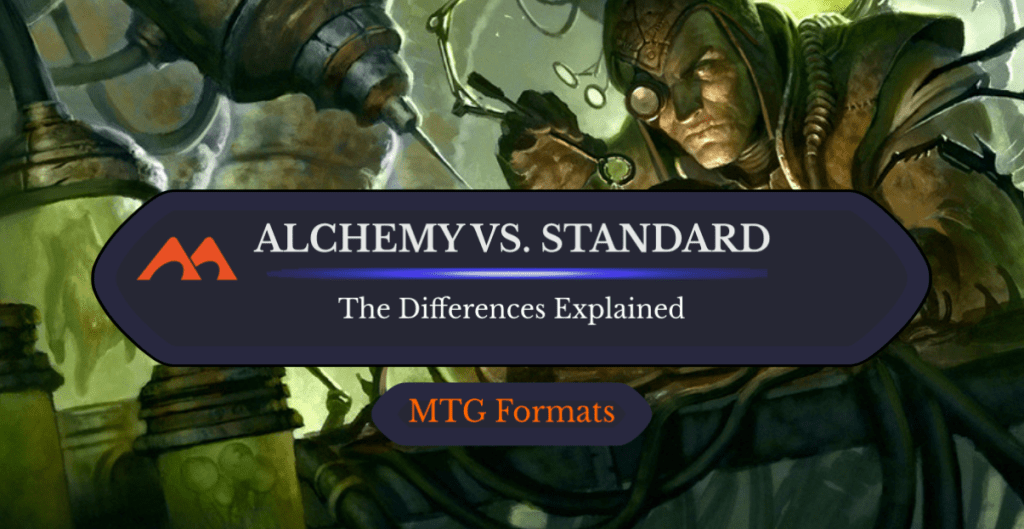
Forbidden Alchemy | Illustration by David Rapoza
Magic: The Gathering Arena used to be a very streamlined way to play Magic. However, as more and more formats are added to the platform, the more players are forced to choose how to engage with it. Much like paper Magic, there are a variety of different competitive formats that can be played on Arena. This may leave you wondering about the dissimilarities between some of them, which cards are different, and which format is right for you.
Today we’re going to focus on two of the more similar formats on Arena: Standard and Alchemy. My initial impression of Alchemy was that it was simply Standard, with a few extra bells and whistles attached. However, after looking more at the metagame of each format, and considering Standard’s new rotation schedule, there are some key differences between these two ways to play.
I’m going to run through the major differences between these two formats. This will hopefully give you a better understanding of which one is right for you.
What’s the Difference Between Alchemy and Standard?
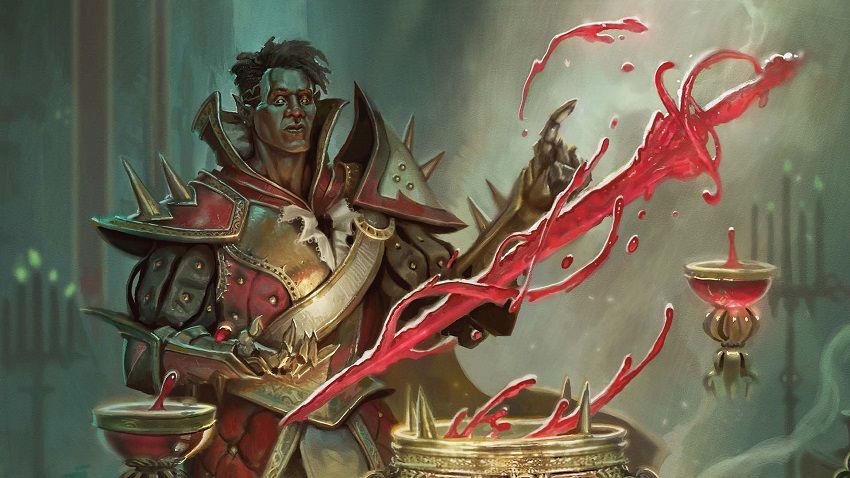
Arterial Alchemy | Illustration by Caio Monteiro
One of the key differences between Alchemy and Standard is that Alchemy is exclusively a digital format. In fact, it can only be played on Magic Arena, not on MTGO. As a purely digital format, Alchemy’s cards can be rebalanced on the fly and can use specific, digital-only mechanics that otherwise wouldn’t work in paper Magic.
Standard, on the other hand, uses only cards that are available in paper. It can be played in person and on either Arena or MTGO. Because it only includes physical cards, the meta isn’t as easily impacted by changing cards, and bans are the main way that it’s impacted over time.
Standard also now has a longer set rotation than Alchemy. Whereas the Alchemy format was originally “based on” Standard, it now actually has its own unique rotation that covers a narrower scope of releases.
Format Rules
Standard is a one-on-one Constructed format. Decks are built out of a minimum of 60 cards. While there’s no upper limit on how many cards you can have in your deck, keep in mind your deck must be small enough for you to shuffle it on your own. You may also have up to 15 cards in a sideboard, which is recommended when playing best of three matches, which is the default for all paper Standard events.
Standard’s legal card pool is made up of the premier sets from the three most recent years. Each fall, sets that came out more than three years ago rotate and are replaced with the new year’s sets as they come out.
Alchemy has similar rules when it comes to deck construction as Standard, with one key difference. As a digital-only format, you don’t have to worry about how big your deck is. You’ll never need to shuffle by hand and therefore can cram as many cards in as you’d like. That’s how you get things like the 200+ card Yorion, the Sky Nomad decks that used to show up on Arena.
Alchemy also has a different set rotation now than Standard. Alchemy is sticking to the original two-year rotation that Standard originally had. That means older sets that are currently Standard-legal like Innistrad: Midnight Hunt and Streets of New Capenna have already rotated out of Alchemy.
Alchemy also has digital-only sets that release shortly after the Standard sets do. These sets share a name and some themes with the main sets, but are marked as Alchemy sets; for example Alchemy: Eldraine is the Alchemy supplement for Wilds of Eldraine. These cards use digital-only mechanics and allow Alchemy to have a different meta from Standard. In addition, Alchemy versions of premier paper sets sometimes also come out. For example, March of the Machine: The Aftermath and The Lord of the Rings: Tales of Middle-earth also appear in Alchemy form on Arena.
Affordability
When discussing the difference between Alchemy and Standard in terms of cost, I’m only going to be looking at the cost for MTG Arena. Since you can’t play Alchemy anywhere else, it doesn’t make a lot of sense to compare it to the cost of a paper Standard deck. This is more an analysis of which is more affordable on Arena.
When discussing cost on Arena, it really comes down to how many wildcards you’ll need to craft the most popular meta decks. You can dig into the approximate dollar amount needed to get a certain number of wildcards, but for today’s purposes I’m just going to be sticking to comparing how many wildcards you’ll need. The main thing you need to know is that the more wildcards you need to craft a deck, the more expensive that deck is.
Using Arena Tutor’s Meta Deck Browser, I was easily able to see the most popular deck types in both Standard and Alchemy on Arena. This also gave me my easiest one-to-one comparison when it came to relative prices of decks.
According to Arena Tutor, the most popular type of deck in both formats is Mono-Red Aggro. While the style of deck is the same, the actual cost is rather different. In Standard, you need 7 mythic and 20 rare wildcards in order to craft the full deck. In Alchemy, the most popular red deck requires 1 mythic and 1 rare wildcard to craft, making it far less expensive.
While there aren’t any easy one-to-one comparisons like this, looking at decks that run similar cards in both formats can help show the difference in cost. For example, we’re going to look at a popular Rakdos midrange deck in Standard and a mono-black midrange deck in Alchemy. These are both in the top six most popular meta decks for the formats according to Arena Tutor. They also both use cards like Sheoldred, the Apocalypse and Lord Skitter, Sewer King. The Standard deck requires 11 mythic and 32 rare wildcards. The Alchemy deck uses 12 mythic and 12 rare wildcards.
To be fair, having a multicolor deck is always going to increase the number of rares needed due to the land base. When removing the wildcards needed for lands, you still get 11 mythic and 14 rare wildcards for the Standard deck. While not as big of a difference, you still need more wildcards for the Standard version than a similar deck played in Alchemy even disregarding lands.
Now this isn’t a universal truth. Some meta Alchemy decks, especially the 5-color Legends deck, use an insane number of wildcards. But if you’re just looking for a popular meta deck in one of the two formats that costs the least, it seems as though Alchemy has the slight edge over Standard in that regard.
What’s important to remember, however, is that Alchemy’s meta shifts more frequently than Standard’s. With a quicker rotation and the ability for cards to be rebalanced, Alchemy might be a less sound investment than a slightly more expensive Standard deck.
Fun and Player Reception
Your enjoyment of Alchemy is largely based on how you feel about digital-only cards and mechanics. This seems to be a somewhat contentious point among players. Some players like having a unique set of cards that take advantage of the game being digital. It’s almost like a selling point for Arena, since these cards can’t be played on any other platform. However, this is also why players who prefer their online Magic simply emulate the paper game don’t really like Alchemy. This is especially true for Historic players who gravitated to the format simply to avoid keeping up with Standard but feel outpaced by cards using digital-only mechanics.
Another sticking point for Alchemy is that it doesn’t have as many chances to draft cards from its sets without paying real money. This means that it’s more difficult to get format staples than it would be in Standard, where you can expect to be able to draft for free every couple of days at the very least. A lot of players don’t like that they have to spend real money just to try out a format they might not like.
Standard is a bit safer of a bet for a few reasons. First, any Standard-legal cards can also be played in any other Arena format. This means there’s no risk of investing in cards that you might not end up using. Second, it’s easier to draft Standard cards, meaning you’re more likely to be able to put together meta decks without sinking as much real money into the game.
Mechanics
I’ve consistently mentioned that Alchemy’s digital-only mechanics change the game, but I want to get a little more specific about how exactly. Let’s take a look at some of the more popular mechanics unique to the format.
The first of these is perpetual effects. Perpetual effects are abilities that are granted to cards for the remainder of the game, unless removed by some other ability. For example, Sarkhan, Wanderer to Shiv can perpetually reduce the cost of dragon cards in your hand.
This type of ability would be very difficult to track on paper, since it would require your opponent to trust that you had certain cards in your hand at the time of this ability’s activation, or else force you to find a way to mark the cards in question. It would also require players to remember which dragons were in their hand for each activation of the ability to remember how much each one’s cost is reduced by. On Arena, these effects are tracked automatically. This allows for cards that might be messy on paper to exist in the format.
Seek is another digital only mechanic that finds random cards of a specified type from your library. For example Seek New Knowledge grabs two nonland cards from your deck. This wouldn’t be possible on paper without forcing you to draw several random cards until you get two nonland ones, and it also wouldn’t be possible without forcing you to shuffle after.
These and other similar Alchemy mechanics give the format a unique feel, but one that some players don’t like since it doesn’t feel like paper Magic.
Long-Term Viability
It’s always good to consider how long a deck you’re building is going to last you. Standard now has a longer rotation than Alchemy by one year, giving you extra time to play with your cards. Additionally, you can be confident knowing there won’t be an update that significantly nerfs any of your best cards in Standard like it could in Alchemy. This gives Standard more viability in the long term than Alchemy.
Meta Diversity
Standard isn’t exactly a bastion of deck diversity. According to Arena Tutor, 57.9% of the Standard meta is mono-red aggro decks. Only about nine other decks make up the rest of the meta. There are 10 decks that have an over 50% win rate, so theoretically there’s some diversity in the meta. That said, over half the time you’re playing it’ll likely be against a mono-red aggro deck, so it may not feel that diverse.
Meta diversity is possibly even worse in Alchemy according to Arena Tutor. 63.9% of decks are mono-red aggro, with an additional 19.4% being mono-black midrange. This means the remaining meta decks only show up about 16% of the time. Additionally, only five decks have an average win rate of over 50% compared to the 10 in Standard.
Wrap Up
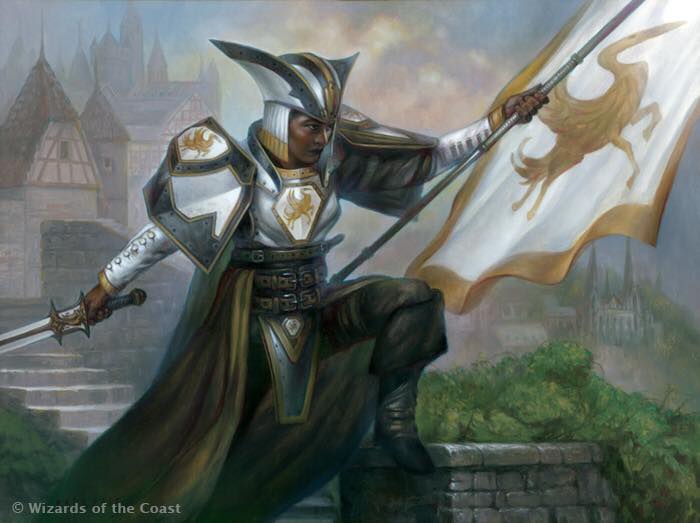
Thraben Standard Bearer | Illustration by Volkan Baga
When comparing these two formats, it really comes down to your opinion on Alchemy’s digital-only elements. The format lives and dies by those, as they are really the only unique things about it. If you don’t like them, you probably won’t like Alchemy.
Which format do you prefer? What would make Alchemy more exciting to you if you aren’t sold on it? Let me know in the comments below or on Draftsim’s X (formerly Twitter).
Thank you for reading and see you next time!
Follow Draftsim for awesome articles and set updates: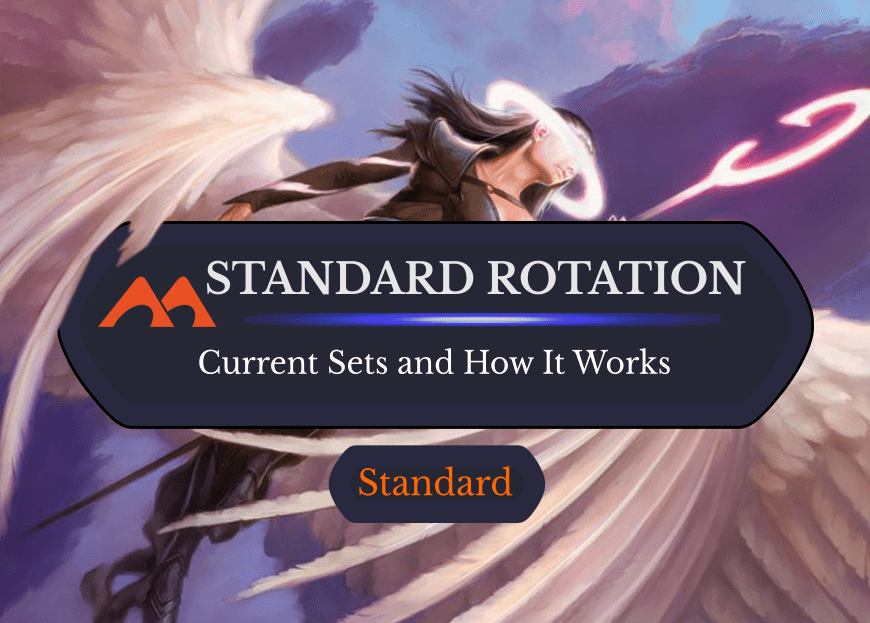
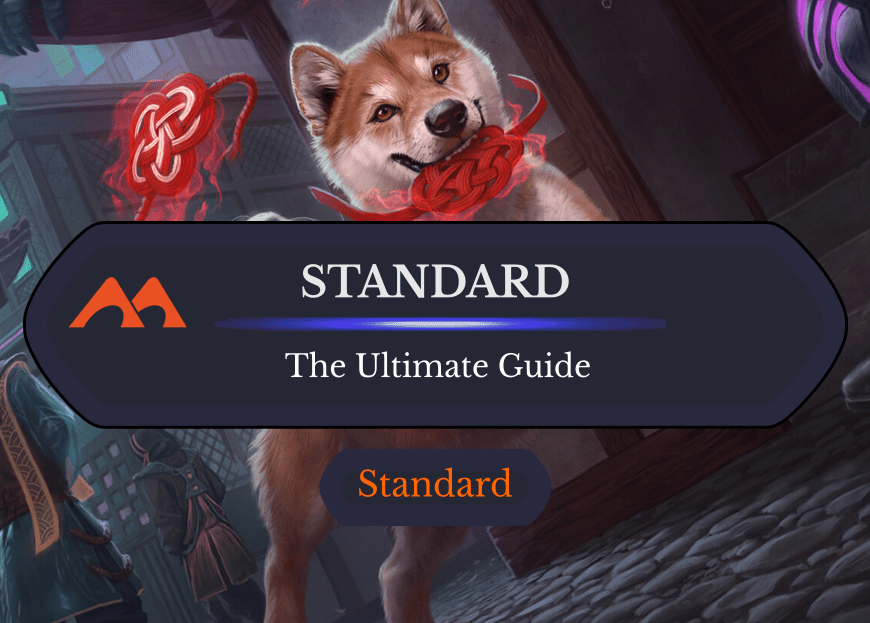
Add Comment